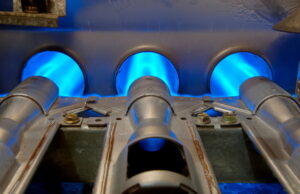Your furnace has a lot of components. If something is wrong, how could you possibly guess which component is causing the problem? First, for safety’s sake, let us be clear that any furnace problem should be diagnosed and repaired by a qualified technician. But it is always helpful to better understand the heating system in your own home.
One of the components that can prevent your furnace from working properly is the flame sensor. As the name implies, it senses the flame. What can go wrong with your flame sensor, and what are the signs that this is the root of your furnace problem? Here’s a rundown of what the flame sensor is there to do, what can prevent it from doing its job properly, and what that does to your furnace.
Different Types of Ignition
Gas furnaces used to always have what’s called a standing pilot light. This type of furnace keeps a flame burning at all times, using a small amount of gas. Then, when the thermostat calls for heat, that pilot flame is used to ignite the fuel that provides that heat. Now, electronic ignition systems are available, and they come in two types.
- Hot Surface Igniter: This is a metal component that is heated until it’s hot enough to glow when the thermostat calls for heat. When it reaches a certain temperature, the gas is allowed to flow, and the heat from this component ignites it.
- Intermittent Ignition: This type of furnace has an electronic component that produces a spark. When the thermostat calls for heat, a tiny amount of gas is released and the intermittent igniter lights it with a spark, creating a pilot light. Only when the light is on will the gas flow open to allow the furnace to heat.
The Flame Sensor’s Job
All gas furnaces manufactured today have flame sensors. This is to ensure that if there’s no flame to burn the gas, the gas won’t be allowed to flow. Gas flowing without proper ignition means a flammable spill and toxic fumes, so the flame sensor’s job is extremely important. Because of the nature of its job, being exposed to fire all the time, a flame sensor can easily become dirty just like the window of a fireplace or wood stove. It also goes through constant temperature changes, which causes it to expand and contract. Over years of use, this can lead to cracking.
Signs of a Flame Sensor Problem
The most obvious indicator that there might be an issue with your flame sensor is if your furnace is not heating your home. First check that the furnace hasn’t accidentally been turned off, and that the circuit breaker hasn’t been tripped. Then listen: is there a clicking sound? This could be the furnace wanting to start and the flame sensor preventing it from doing so. Another sign is yellow flames, rather than the usual blue of natural gas combustion, in the burner. This means the fuel is not combusting completely, which leads to a carbon monoxide risk.
If you suspect that something is wrong with your flame sensor, call for heating repair in Oro Valley right away. And keep in mind that the best way to keep your flame sensor in good shape is with annual furnace maintenance. During this process, your technician will examine your flame sensor, clean it thoroughly, or let you know if it needs to be replaced.
Contact Picture Rocks Cooling, Heating & Plumbing today to schedule an appointment with our professionals.


